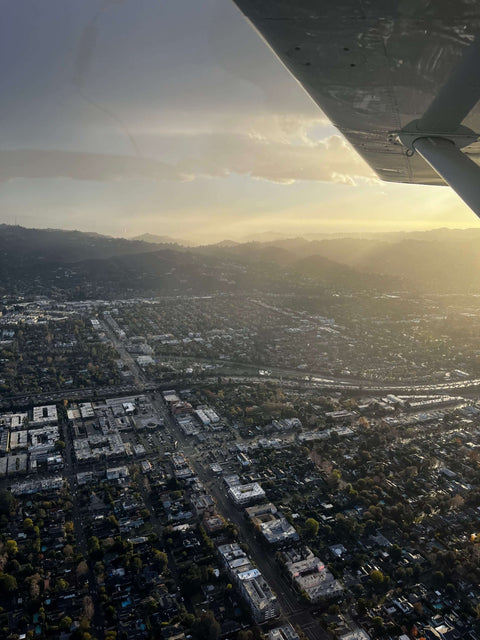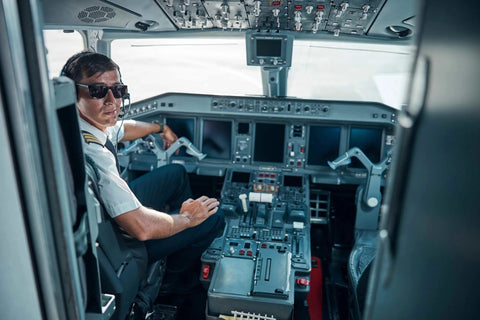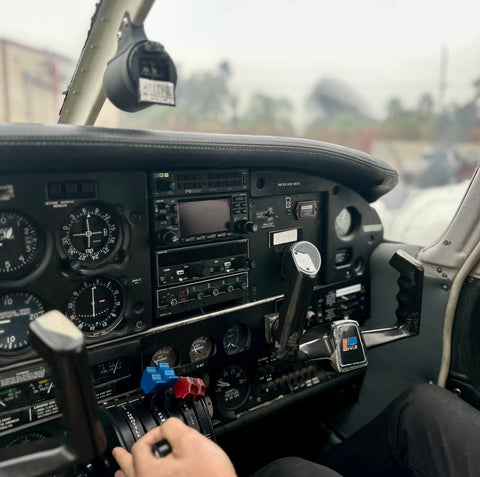If you’ve ever dreamed of becoming a pilot, you know there are medical requirements you need to meet before taking to the skies. One common concern among aspiring pilots is color blindness—but does having a color vision deficiency automatically disqualify you from becoming a color blind pilot?
The short answer is: not necessarily. While color vision is important in aviation, there are workarounds and alternative tests that may allow you to qualify for a pilot’s license. In this guide, we’ll explore how color blindness affects pilot eligibility, what the FAA (Federal Aviation Administration) requires, and what options are available if you have a color vision deficiency.
What Is Color Blindness?
Color blindness, or color vision deficiency (CVD), is a condition that affects how the eyes perceive certain colors. It’s typically inherited but can also be caused by medical conditions, injuries, or aging. People with CVD may have difficulty distinguishing between red and green (the most common type), blue and yellow, or, in rare cases, may see the world in shades of gray. Blue-yellow color blindness is a less common type that affects the ability to distinguish between blue and green as well as yellow and red, while red-green color blindness is extensively discussed and includes various diagnostic methods such as the anomaloscope.
While color blindness does not affect visual sharpness or depth perception, it can make it difficult to differentiate between colored lights and signals—something that plays a key role in aviation safety.
Why Does Color Vision Matter for Pilots?
Pilots rely heavily on visual cues to navigate, communicate, and operate aircraft safely. Some critical color-dependent tasks include:
-
Reading cockpit instruments – Some aviation instruments use color-coded indicators.
-
Identifying runway and taxiway lights – Green, red, and white lights help pilots navigate airports safely, especially at night. Recognizing different colored lights is crucial for navigation and distinguishing runways, approach paths, and cockpit information.
-
Understanding aviation charts and displays – Various colors indicate different airspaces and hazards.
-
Recognizing emergency signals – Color-coded signals indicate warnings, alerts, and navigational guidance. Color signal controls are essential for pilot safety, particularly for those with color vision deficiencies.
Because of these factors, the FAA has strict color vision requirements to ensure pilots can accurately perceive the necessary visual cues.
FAA Color Vision Requirements for Pilots
The FAA requires pilots to demonstrate adequate color vision as part of the medical certification process. Color vision impairment can impact pilot eligibility, but advancements in testing have allowed individuals with varying degrees of color vision impairment to pursue aviation careers. When you apply for a First-Class, Second-Class, or Third-Class Medical Certificate, an Aviation Medical Examiner (AME) will test your color vision using standard methods.
FAA-Approved Color Vision Tests
There are several ways the FAA evaluates color vision:
-
Ishihara Test – This is the most common color vision test, where you identify numbers hidden within colored dot patterns.
-
Farnsworth Lantern Test (FALANT) – This test uses red, green, and white lights to evaluate your ability to distinguish between colors.
-
Dvorine, Richmond HRR, or AO-HRR Tests – Other pseudoisochromatic plate tests similar to the Ishihara test.
If you pass one of these tests, you meet the FAA’s color vision requirements with no restrictions. However, if you fail, you may receive a medical certificate with a restriction, such as:
-
"Not Valid for Night Flight or By Color Signal Control" – This means you cannot fly at night or operate under color signal control conditions.
What If You Fail the Initial Color Vision Test?
Failing the first test doesn’t mean your aviation career is over! One such alternative is the signal light test, which assesses an applicant's color vision capabilities necessary for aviation certification. The FAA allows pilots to take alternate color vision tests or practical tests to prove their ability to differentiate colors effectively.
Alternate FAA Color Vision Testing Options
-
Ophthalmologist or Optometrist Evaluation – You can visit an eye specialist for additional color vision testing. If you pass, you can submit results to the FAA for reconsideration.
-
Operational Color Vision Test (OCVT) – This is a real-world test where you must:
-
Identify airport lighting signals correctly.
-
Read aeronautical charts and cockpit instruments with color coding.
-
-
Medical Flight Test (MFT) – If needed, this test assesses your ability to distinguish colors while flying.
Many pilots who initially fail standard tests are able to pass alternative evaluations, removing restrictions on their medical certificates.
Color Vision Medical Flight Test (MFT)
The Color Vision Medical Flight Test (MFT) is a practical evaluation designed to assess a pilot’s ability to perceive colors in real-world flying conditions. Administered by a flight instructor, this test is crucial for pilots with color vision deficiencies who need to demonstrate their capability to safely operate an aircraft. During the MFT, you will be required to identify and interpret various visual cues, including colored lights, navigation charts, and instrument displays. This hands-on assessment ensures that despite a color vision deficiency, you can accurately read and respond to essential visual information. Successfully passing the MFT can be a significant step in obtaining your medical certification without restrictions, proving that you can handle the visual demands of flying.
Operational Color Vision Test (OCVT)
The Operational Color Vision Test (OCVT) is another vital assessment for pilots with color vision deficiencies. This standardized test evaluates your ability to identify and interpret colored lights, signals, and displays in practical scenarios. Typically administered by an aviation safety inspector, the OCVT consists of two main components: a visual acuity test and a color vision test. The visual acuity test checks your ability to see objects clearly at a distance, while the color vision test focuses on your ability to distinguish between different colors. By passing the OCVT, you demonstrate that you can safely operate an aircraft, even with a color vision deficiency. This comprehensive evaluation is an important tool in the FAA’s medical certification process, helping to ensure that all pilots can meet the necessary visual standards for safe flight operations.
Can Color-Blind Pilots Still Fly Commercially?
Yes! Many pilots with mild to moderate color vision deficiency have successful careers in aviation. If you pass an alternate FAA test, you can qualify for a First-Class Medical Certificate, which is required for airline pilots.
Obtaining a Second-Class Medical Certificate is crucial for those aiming to become commercial pilots. This certificate ensures that pilots are fit for safe operation during commercial flights and includes passing color vision tests.
However, those who cannot pass any FAA-approved test may face restrictions. A Third-Class Medical Certificate (for private pilots) with a night-flying restriction still allows daytime general aviation flying.
Famous Pilots With Color Blindness
Surprisingly, several well-known pilots have flown successfully despite color vision deficiencies. While FAA regulations are strict today, many earlier aviators found ways to adapt and excel.
One famous case is William “Billy” Bishop, a World War I flying ace. Despite a reported color vision deficiency, he became one of Canada’s greatest pilots.
These stories highlight that while color blindness presents challenges, it doesn’t necessarily mean you can’t pursue aviation.
How to Know If You Have Color Vision Deficiency
If you’re unsure about your color vision, the best step is to get a medical examination before beginning flight training. Many people with mild CVD aren’t even aware they have it until they take an FAA medical exam.
You can check your color vision at:
-
An optometrist or ophthalmologist’s office using FAA-approved tests.
-
Online color vision tests (though these are not official, they can give you an idea).
-
An Aviation Medical Examiner (AME) during your initial medical exam.
If you find out you have CVD, don’t be discouraged! Explore alternative testing options and work with an FAA medical specialist to find the best path forward.
Can You Become a Pilot If You’re Color Blind? Final Thoughts
Being color blind doesn’t mean you have to give up on your aviation dreams. While the FAA does have strict color vision standards, there are several alternative testing options that can allow you to qualify for a medical certificate without restrictions.
If you’re serious about becoming a pilot:
✔ Get tested early to understand your color vision status.
✔ If needed, explore FAA-approved alternative tests like the Operational Color Vision Test (OCVT).
✔ Consult an FAA medical expert for guidance on your specific case.
Many successful pilots have overcome color vision challenges and built rewarding careers in aviation. If flying is your passion, don’t let color blindness stop you—there may be a way forward!
Ready to Start Your Flight Training?
At LA Flight School, we help aspiring pilots navigate FAA requirements and achieve their aviation goals. Whether you’re looking to earn your private pilot's license, Private Pilot License (PPL), Commercial Pilot License (CPL), or Airline Transport Pilot License (ATPL), our expert instructors will guide you every step of the way.
✅ Book a free consultation today and take the first step toward your dream of flying!
This blog post is optimized for SEO, includes positive, engaging language, and provides actionable steps for aspiring pilots. Let me know if you’d like any adjustments!



